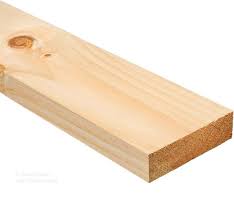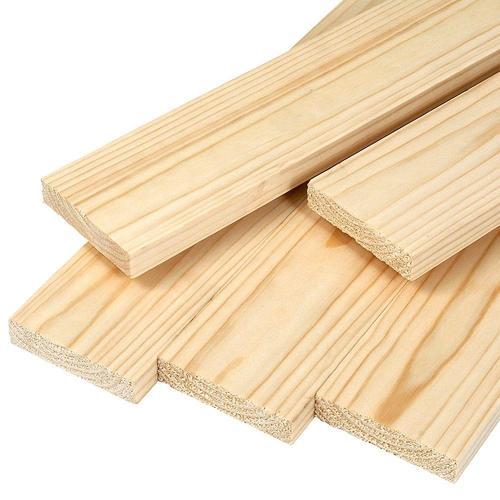ATP Sarl is the #1 wood supplier and exporter in Central Africa. We export woods in all colors, including light colored woods and deliver to all major locations around the globe. No matter where you are in the world, feel free to contact us for the best quality wood timber at the right price.
Before we start talking about light-colored woods, you should know that not all woods that have white in their names are essentially white-colored. In fact, there is no wood that is 100% white in color.
Light-colored Wood Properties & Characteristics
Most of the light-colored woods are softwoods.Generally hardwoods are considered to be dark wood. However, there are exceptions such as white oak, maple, red oak and hickory that despite being hardwoods are light-colored.
Because most of the light-colored woods are softwoods, they share many similar characteristics. For example, all softwoods are produced from conifers. Light-colored softwoods are generally less strong and durable and have lower densities. They are easy to work with and are generally cheaper to buy. We’ll discuss more properties of light-colored wood by species here.
Different Types of Light-colored Wood Species
Most softwoods are light-colored, and the color will darken with age in some cases. The following wood species generally have light color:
1) Eastern White Pine

This is a popular softwood species and grows primarily in Eastern North America. The tree size is in the range of 65-100 ft and has a 2-4 trunk diameter. The heartwood is light brown and the sapwood is a pale yellow to almost white. The color of the White Pine darkens with age. It has a straight grain with a medium texture, which makes it fairly easy to work with. In terms of durability and rot resistance, the wood is rated as low to moderate.
Common uses of Eastern white pine include construction, boxes, carving, interior millwork, and boatbuilding.
2) Western White Pine

Western White Pine has properties similar to Eastern White Pine. It grows in Western North America and has a low Janka rating. Heartwood is light brown and darkens with age, while the sapwood is pale yellow. It has a straight grain with a medium texture. The wood is low durable and generally easy to work with.
Uses include veneering, plywood, boxes, carving, construction, crates, wooden matches, and interior millwork.
3) White Oak

White Oak is a hardwood native to the Eastern United States. The tree has a max height of about 85 ft and a trunk diameter of 3-4 ft. The heartwood is light or medium brown, while the sapwood is slightly paler. It has a straight grain with a coarse texture. Unlike other light-colored woods, white oak is very hard, dense and durable. It has good resistance to moisture and rot. Common uses of white oak include furniture, boatbuilding, cabinetry, flooring, interior trim, veneering, and barrels.
4) Red Oak

Same as white oak, red oak is also hardwood. It’s mainly grown in the Northeastern United States and Canada. Trees are about 80-115 ft tall and have a 3-6 ft trunk diameter. Most properties are similar to white oak. Heartwood is light or medium brown and sapwood is paler in colour. It has a straight grain with a coarse texture. However, red oak is not as durable and has poor insect and moisture resistance. It is easy to work with though. Commonly used for furniture making, cabinetry, flooring, veneering, and interior trim.
5) European White Beech

Found in Europe, white beech is generally pale cream in color and may acquire a golden tone when prepared with steam for veneering. It has a straight grain with a fine to medium texture. The wood is practically non-durable and susceptible to rot, insects and moisture. Workability is good. Possible uses include veneering, lumber, flooring, furniture, boatbuilding, cabinetry, plywood, musical instruments, and turned objects.
6) American Hard Maple

Commonly known as hard maple, this wood grows in Northeastern North America. The trees are about 80-115 ft tall with a 2-3 ft trunk diameter. Hard maple is primarily used for its sapwood, which is white to off-white in color. The heartwood color is darker reddish-brown. The wood grain is straight and has a fine texture. It is easy to work with, but is rated as non-durable and non-resistant. Uses include flooring, veneering, musical instruments, paper pulp, cutting boards, workbenches, baseball bats, and turned objects.
7) American Holly Wood

The American Holly is native to the Eastern and South-central US. It is very pale, almost white. The grain is irregular and the texture is fine. Holly is practically non-durable and prone to insect attack. Because of interlocked grain, it is generally difficult to work with. Uses include furniture, piano keys, inlays, brush handles, whip handles, and turned objects.
8) American White Ash

White Ash wood is produced in Eastern North America. It is light to medium brown and has a medium to coarse texture. The grain is straight. It is rated as slightly durable to perishable in terms of insect resistance. Uses include flooring, millwork, baseball bats, boxes, crates, tool handles, etc.
Uses of Light-colored Wood
Light-colored woods are preferred for construction and furniture projects where a clean and bright appearance is needed. For example, interior design in homes and offices is often made with pale color woods, which not only allow more sunlight in the place but also make it look bigger.
Contact ATP Sarl to enquire about or purchase the best quality, sustainable light-colored woods at the lowest price in the market.


